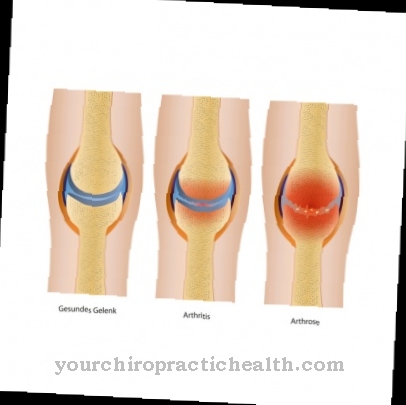As Cingulotomy is called surgical treatment of the brain. The treatment was developed as an alternative to lobotomy or leukotomy in the 1940s and is only used in very severe cases of mental illness.
What is the cingulotomy?
Cingulotomy is a form of psychosurgery. It is a surgical procedure used to cut the anterior cingulate cortex.
The cingulotomy was developed as an alternative to the lobotomy in the 1940s. The cingulotomy was hoped to be a psychosurgical intervention with predictable side effects and consequential damage. Since the previously used lobotomy led to severe physical and mental impairments in patients, some of which made them lifelong care cases, an alternative psychosurgical intervention was sought.
This was presented in the form of the cingulotomy by the American physiologist John Farquhar Fulton. Fulton introduced the cingulotomy to the Society of British Neurosurgeons in 1947, saying "if it were feasible, the cingulotomy would have an appropriate place in the form of a limited leukotomy".
Fulton continued to refer to the neuroanatomist James Papez, who attributed the cingulate gyrus to an important role in human emotions.
Function, effect & goals
The cingulotomy replaced the lobotomy in the mid-20th century and was used in particular to treat patients with psychosis, depression, obsessive-compulsive disorder, and schizophrenia. Patients with other neurological diseases such as Parkinson's, Tourette's syndrome, anorexia, and epilepsy were also eligible for surgery.
The cingulotomy targets the anterior cingulate cortex. This takes on an essential role in the regulation of autonomous functions of the body such as heartbeat or blood pressure. The brain area also plays an important role in rational and emotional processes. Processes such as decision making and impulse control are significantly influenced by the anterior cingulate cortex. Interfaces between the emotional and rational level, such as the reward and expectation system, are also essentially conditioned here. According to current neurological investigations, the various functions can be determined in further sub-levels of the anterior cingulate cortex.
Surgical intervention took place as follows until the 1990s: First, a series of computed tomography images are made of the patient's brain to ensure the exact localization of the anterior cingulate cortex. Now some holes are drilled in the patient's skull and then special electrodes are inserted into the patient's brain. The integrity of vital arteries and blood vessels is of paramount importance during surgery. For this reason, a series of additional images is taken of the inserted electrodes before the actual cingulotomy begins.
The electrodes are then moved in the direction of the anterior cingulate cortex according to a precise route that is specified by the Cts and other imaging methods. After the electrode has reached the anterior cingulate cortex through this procedure, it is heated to around 75-90 ° C. The resulting injury now serves as a central point around which further lesions are inserted into the area.
The use of magnetic resonance imaging has improved the precision of the cingulotomy. Since the MRI not only gives much more precise information about the location of the brain area, but also enables a differentiation of the cell composition, the gray matter to be operated on is better identified. This largely avoids unnecessary lesions. Another advance in cingulotomy is the gamma knife or gamma knife. With this method, the brain tissue is severed by targeted radiological radiation and many complications of conventional cingulotomy are excluded.
By severing the anterior cingulate cortex, numerous mental illnesses, especially obsessive-compulsive disorder and depression, could be eliminated. The results are very radical, however, since, in addition to the controlled removal of the mental disorder, there are also numerous uncontrollable side effects and consequential damage. Significant personality changes and permanent immobilization are only the most common sequelae for patients.
Due to the development of effective psychotropic drugs, psychosurgical interventions have been declining to this day. Furthermore, the dangers and side effects have been moving more and more into the focus of society since the 1950s, which additionally promotes a decrease in interventions.
You can find your medication here
➔ Medicines against memory disorders and forgetfulnessRisks, side effects & dangers
Since the cingulotomy causes an irreversible change in the human character and numerous side effects and consequential damage can occur, the procedure is only used to a very limited extent in the 21st century.
Nausea, incontinence, vomiting and headache are described as mild side effects in the first few days after the operation. In addition to the mild side effects, there are also irreversible consequential damage that cannot be assessed in advance. Patients often appear retarded and childlike or otherwise noticeable. Hydrocephalus (water head) occurred in two percent of the observed patients. A constant lack of interest in the world and life itself sets in and many patients wither in their living rooms at home.
A permanent immobilization of the patient comes into effect, which otherwise could only be brought about by strong psychotropic drugs. Even if some patients comment positively about the state of permanent immobilization, it is questionable whether the state created can really be considered an improvement. In addition, the strong personality changes of those affected often have a negative effect on family and social life.



























